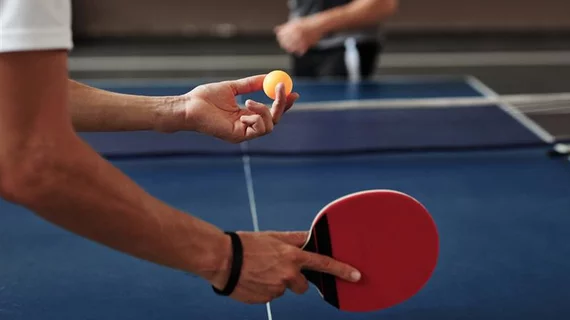Playing ping pong improves brain connectivity
People who play competitive table tennis, or ping pong, may have superior brain function than that of their peers, according to new MRI data.
A study published in the journal Brain Research highlights key MRI findings related to connectivity and white matter integrity in the brains of athletes who take part in competitive table tennis. Compared to a group of controls that didn’t routinely play ping pong, experts found that those who did displayed higher fractional anisotropy (FA) and axial diffusivity (AD) values in several regions of the brain.
“Table tennis requires players to track the trajectory of the ball in just a few milliseconds, making it one of the world's fastest open-skill sports,” corresponding author Wenming Liu, from the department of sport science at Zhejiang University in China, and co-authors explained. “Studies have shown that the continuous need to perceive and process stimuli from motor-adapted environments during open-ended skill training can have a favorable effect on brain function.”
For the study, 20 competitive table tennis players and 21 healthy non-athletes underwent diffusion tension imaging via 7T MRI. Through this, experts noted several differences in FA and AD throughout the participants’ brains.
First, compared to controls, the table tennis players displayed superior dynamic functional connectivity (dFC) in parts of the orbitofrontal cortex (Brodmann 11) compared to other brain regions, such as the occipital lobe, thalamus, and cerebellar hemispheres. Additionally, part of the temporal lobe (Broadman 48) also showed altered dFC values compared to the parietal lobe, frontal lobe, cerebellum and occipital lobe. Both of these regions are associated with processing emotions.
AD values in the forceps minor and right anterior thalamic radiations also correlated with useful field of view test scores in the table tennis group.
The team suggested that their findings could have clinical implications as they relate to improving or maintaining cognitive function.
“Our results suggest that table tennis players exhibit a unique pattern of dynamic neural activity,” the group wrote. “This provides evidence for potential mechanisms through which table tennis interventions can enhance attention and other cognitive functions.”
View the study abstract here.

